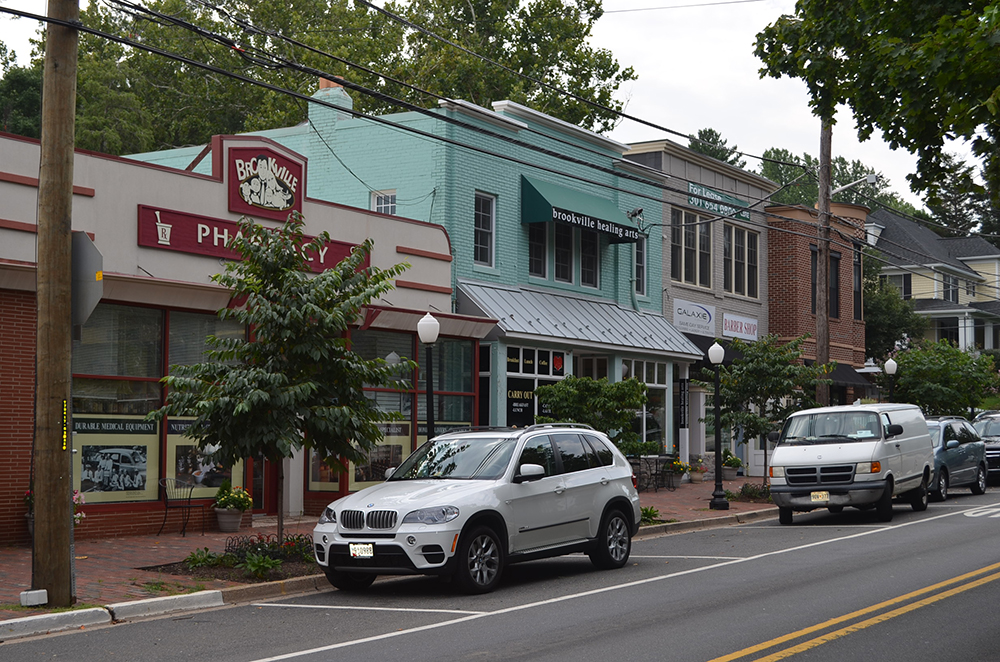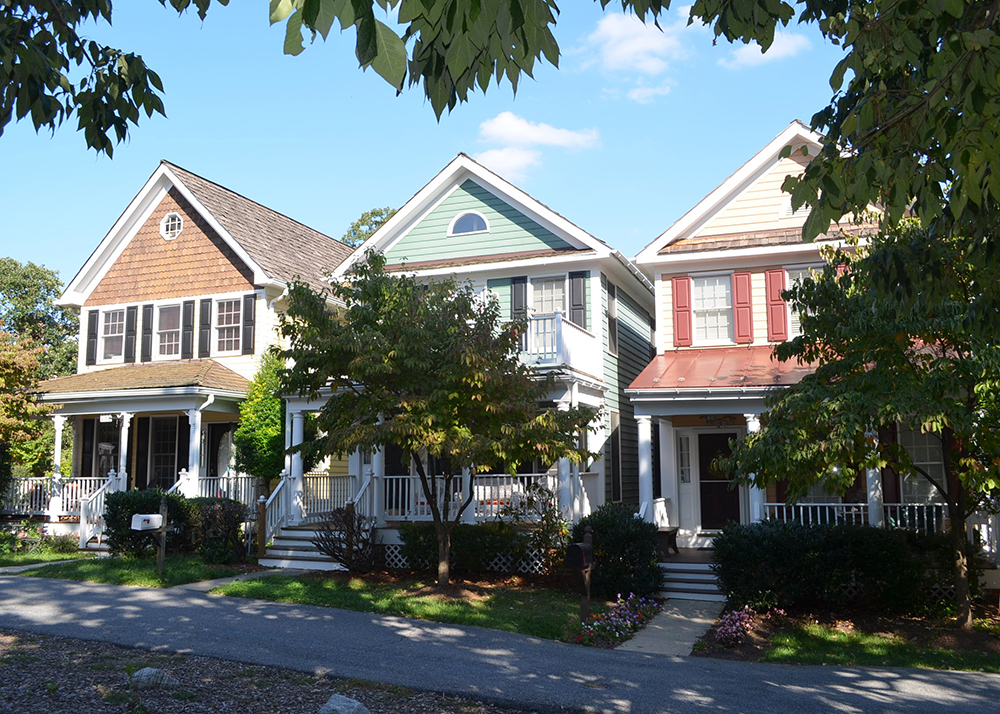Design Excellence is about urbanism! This does not mean turning Montgomery County into an expansion of Downtown Bethesda. It is more about raising the quality of life through the creation of better, more interconnected places to live.
Montgomery County has several great historic examples of urbanism, including Norfolk Avenue in Bethesda or East Diamond Avenue in Gaithersburg at the urban scale; Brookville Road and Taylor Street in Chevy Chase and Ridgewood Avenue in Bethesda at the suburban scale; and Grove Avenue in Washington Grove at the rural scale.

The single block of retail on Brookville Road in the suburban residential neighborhood of Chevy Chase, MD is walkable, mixed-use and active – Urbanism at its best!
Peter Calthorpe, one of the founders of the Congress for New Urbanism and author of the book Urbanism in the Age of Climate Change describes urbanism as:
“I define the term urbanism broadly – by qualities, not quantities; by intensity, not density; by connectivity, not just location. Urbanism is always made from places that are mixed in uses, walkable, human scaled, and diverse in population; that balance cars with transit; that reinforce local history; that are adaptable; and that support a rich public life. Urbanism can come in many forms, scales, locations and densities. Many of our traditional villages, streetcar suburbs, country towns, and historic cities are “urban” by this definition. Urbanism often resides beyond our downtowns. While urbanism will vary by geography, culture, and economy, traditional urbanism always manifests the vitality, complexity, and intimacy that defines our finest cities and towns for centuries. By this definition, suburbs can be “urban” if they are walkable and mixed use…”
We hope that greater design excellence and better urbanism in the County will produce greater health benefits; greater economic value in our homes, properties and businesses; a more environmentally and economically sustainable way of living; greater social inclusion; a wider variety of housing types and affordability; less miles on the roads in cars and a dramatically reduced carbon footprint for everyone.
This change is not an intellectual planning exercise, but rather a positive movement to preserve our environment and meet the needs of young and old alike. Let’s make it happen.

With such a wide array of housing types from small lot – small house types to attached townhouses, to live/work units, to commercial buildings, all within walking distance, Kentlands was designed to promote diversity and walkability. Its intent is to foster a vibrant public realm through great urbanism.